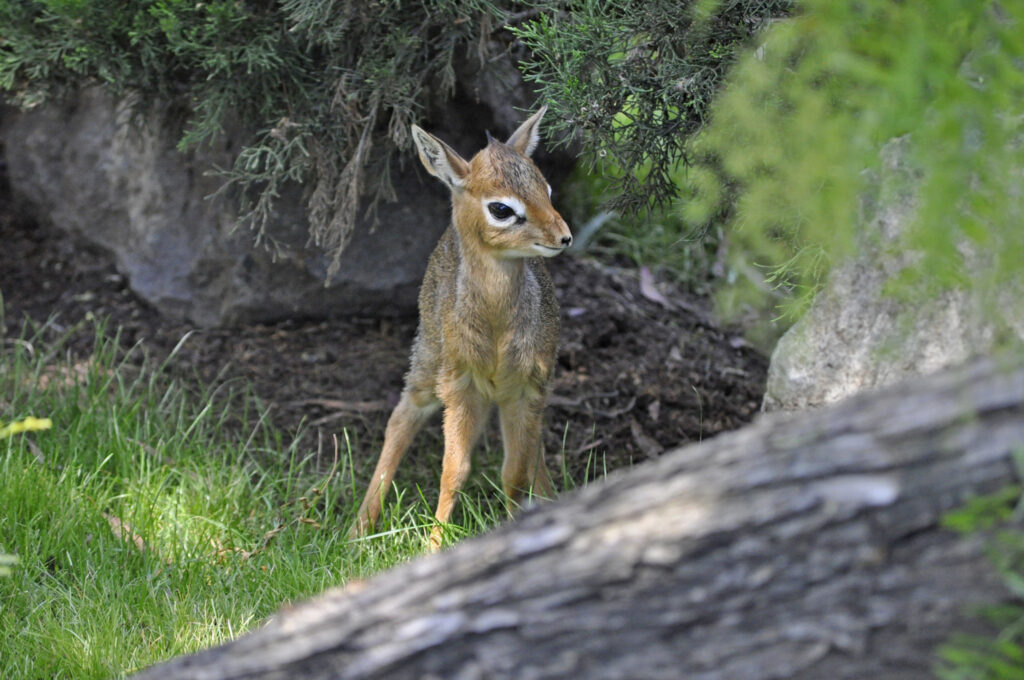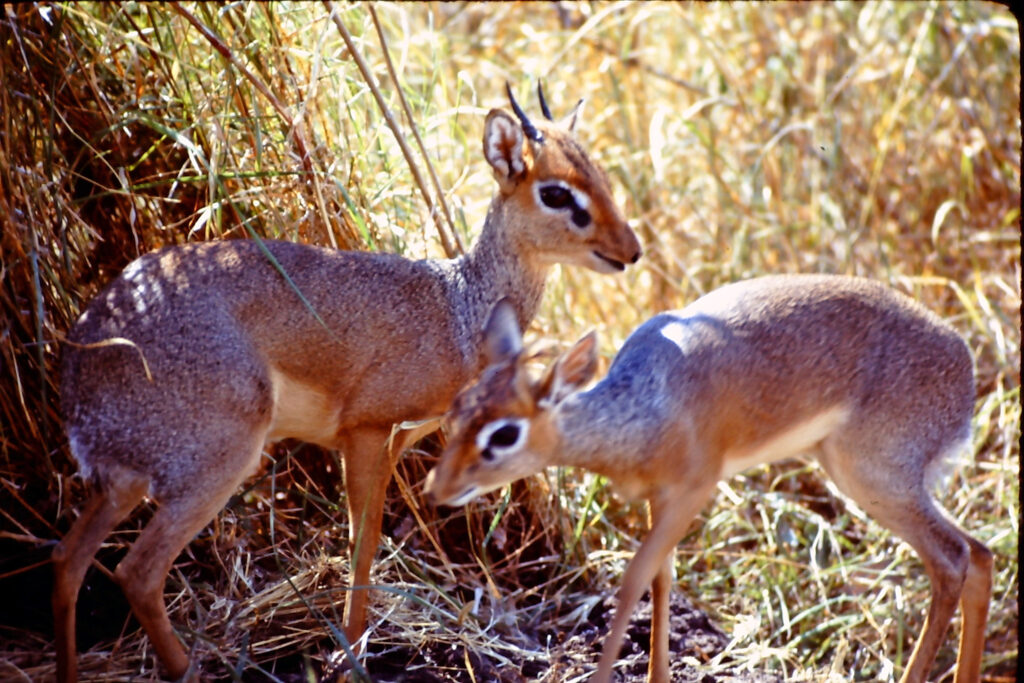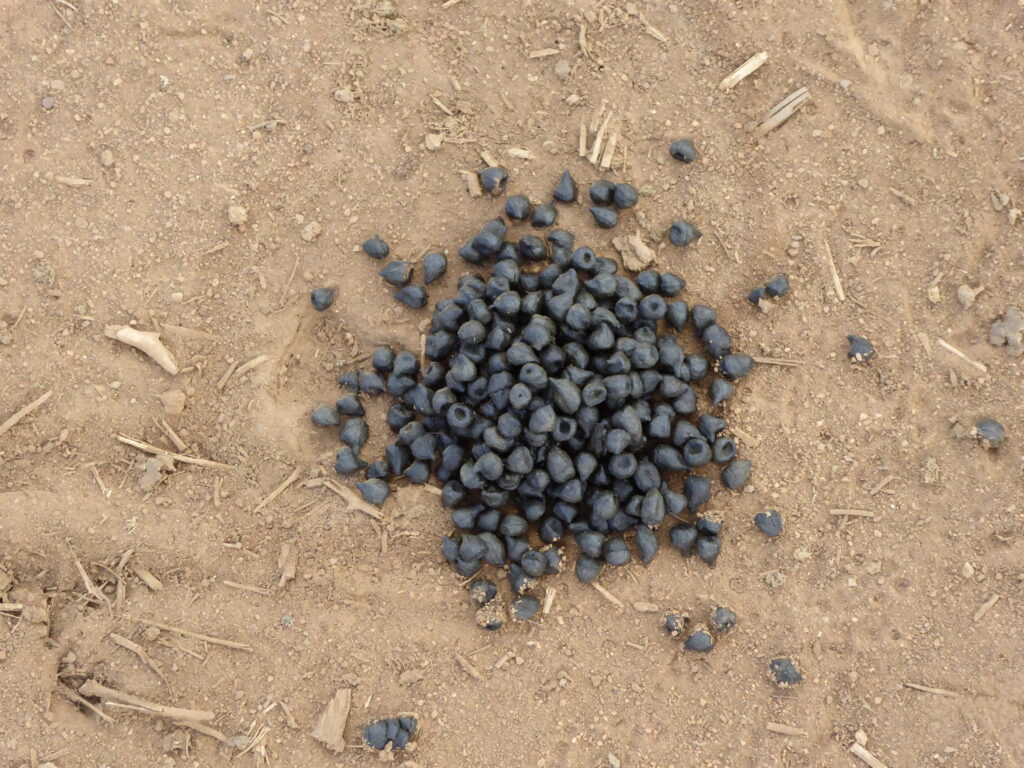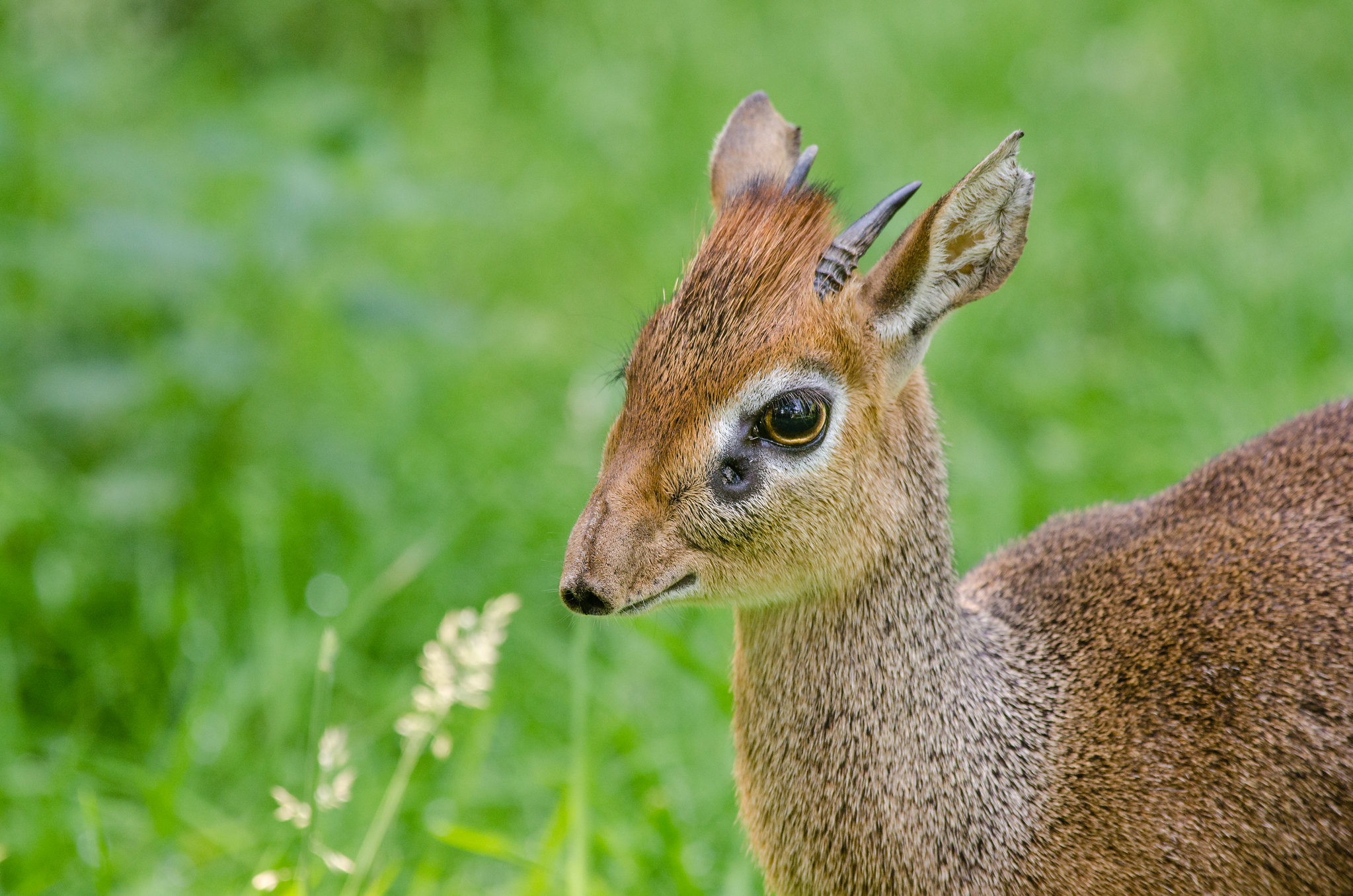Well, now that you are here, you might as well learn a thing or two about this pint-sized, adorable antelope that roams the grasslands of southern and eastern Africa.
Here are 12 fun facts about these adorable creatures that you may not have known.
Dik-Dik Key Highlights
- Despite being one of the tiniest antelopes in the world, Dik-diks possess incredible survival skills. They run as fast as 26 mph in an attempt to evade predators and mark their territories with secret eye fluid.
- Dik-diks are widely considered one of the most adorable animals in the world due to their distinct physical features including their large, doe-like black eyes and elongated snouts.
General Info About Dik-Dik
| Habitat: | Deserts, Savannahs, Open Plains |
| Location: | Eastern and Southern Africa |
| Lifespan: | Wild: 10 years, Captivity: 15 years |
| Weight: | 7 to 15 lbs |
| Diet: | Leaves, fruits and flowers |
| Predators: | Leopards, monitor lizards, cheetahs and Jackals |
| Size: | 12 – 16 inches |
| Top Speed: | 26 mph (48 km/h) |
Learn more by reading our full Dik-dik profile
Top 12 Facts About Dik-Dik
1) Dik-diks Are One of The Smallest Antelope Species in The World
Here’s a fun fact for you: An average-sized Dik-dik is probably smaller than your dog. Once fully grown, these animals reach a height of 12 to 16 inches and weigh around 7 to 15 pounds, making them one of the smallest antelope species in the world.

That being said, they aren’t the smallest. That honor goes to West African Royal Antelopes who stand 10 to 12 inches high as an adult.
2) Their Name Comes From The Alarm Call They Make
While running from predators in the wild, Dik-diks employ a zig-zag running pattern and make a slight whistling noise through their noses to alert family members and other animals of danger.
This whistling sound was dubbed by the naturalists who discovered the animal as a “dik-dik”, which consequently became the animal’s name.
3) A Dik-dik Marks its Territory with Tears
Not tears exactly, but a black fluid that it secretes from the preorbital glands placed in the corner of its eyes.
It’ll poke its head in the grass and even rub its eyes on trees to leave behind the black liquid carrying its scent in order to wade away any other Dik-diks from wandering into its territory.
4) A Male and Female Dik-dik are Easy to Tell Apart
If you ever see a pair of Dik-diks in the wild, you can safely assume that the slightly larger one is the female.
That being said, if you can’t distinguish which one is bigger, then you can look for small-ringed horns, which are a distinct physical trait of the males.
5) They Travel in Pairs

Unlike other antelope species, Dik-diks prefer living and traveling in pairs instead of as a herd. They’re also known for their strong pair bonding.
Which means that when a Dik-dik finds its special someone, they mate for life and live the rest of their lives together.
That’s kind of sweet but unfortunately, it makes them an easier target for predators than a herd of antelopes traveling together.
6) Dik-diks Thrive in Desert Environments
Dik-diks are famous for their unique physical characteristics, especially their elongated noses. Well, it turns out their long snouts actually help them regulate their body temperature by cooling and filtering the dry air in their desert habitats.
Their large, doe-like eyes also allow them to scan for predators in the vast openness of their desert environments.
7) Dik-dik’s Kick Their Babies Out When They Turn 7 Months Old
Female Dik-diks give birth twice a year. Their gestation period usually lasts about 6 months, after which they give birth to a single calf. Their breeding season also lasts the entire year, which is why they get pregnant almost immediately after giving birth.
Since Dik-diks prefer living in pairs, they kick their young ones out of their territory after they reach adulthood, at 7 months old. Mothers are responsible for running their female young off, while the fathers are responsible for the males.
8) Dik-diks Don’t Need Water to Survive
Since a Dik-dik’s body is uniquely suited to survive in desert environments, it doesn’t need water. The cooling mechanism of its snouts allows it to stay cool even in extreme temperatures of up to 40°C (104°F).
Moreover, these little ungulates get most of their moisture from their food, allowing them to thrive in arid environments.
9) They’re Hunted by a Wide Variety of Predators
Remember when we mentioned how traveling in pairs actually makes Dik-diks more attractive to predators? Well, it turns out it actually makes them attractive to a variety of predators, including leopards, jackals, cheetahs and even monitor lizards.
Humans hunt Dik-diks as well, primarily for their pelts which can be used to make gloves. Due to the antelope’s incredibly small size, one pelt can only be used to produce one glove.
10) Some Dik-diks Also Mark Their Territory with a “Defectation Ceremony”

After finding the pair they’ll mate with for life, a pair of Dik-diks often outline the territory of their shared home through a defecation ritual involving both the male and female. First, the female defecates and urinates at a specific point, with the male standing closely behind her.
The male, then quietly sniffs her droppings and starts scraping her feces with his front legs. Once he’s done, he deposits his own feces and urine over hers, completing the ritual. Now that’s one hell of a way to mark a relationship milestone.
11) They’re Known for Their Remarkable Agility
Dik-diks are extremely alert creatures, always open to running from predators at any given moment.
If they do spot a predator, these animals can achieve a running top speed of 26 miles per hour fairly quickly, going through small bushes and shrubbery with remarkable dexterity.
12) Dik-diks Have Highly Sensitive Noses
Apart from helping it stay cool in its desert habitat, a Dik-dik’s nose can sniff out a predator and locate food sources from a mile away.
This is once again due to the specialized nasal passages it has in its nose, which filter through the air it inhales thereby enhancing the nose’s sensitivity to smells.
Learn more by reading our full Dik-dik profile


